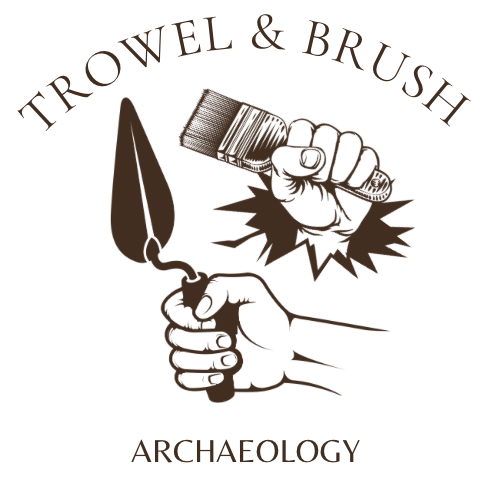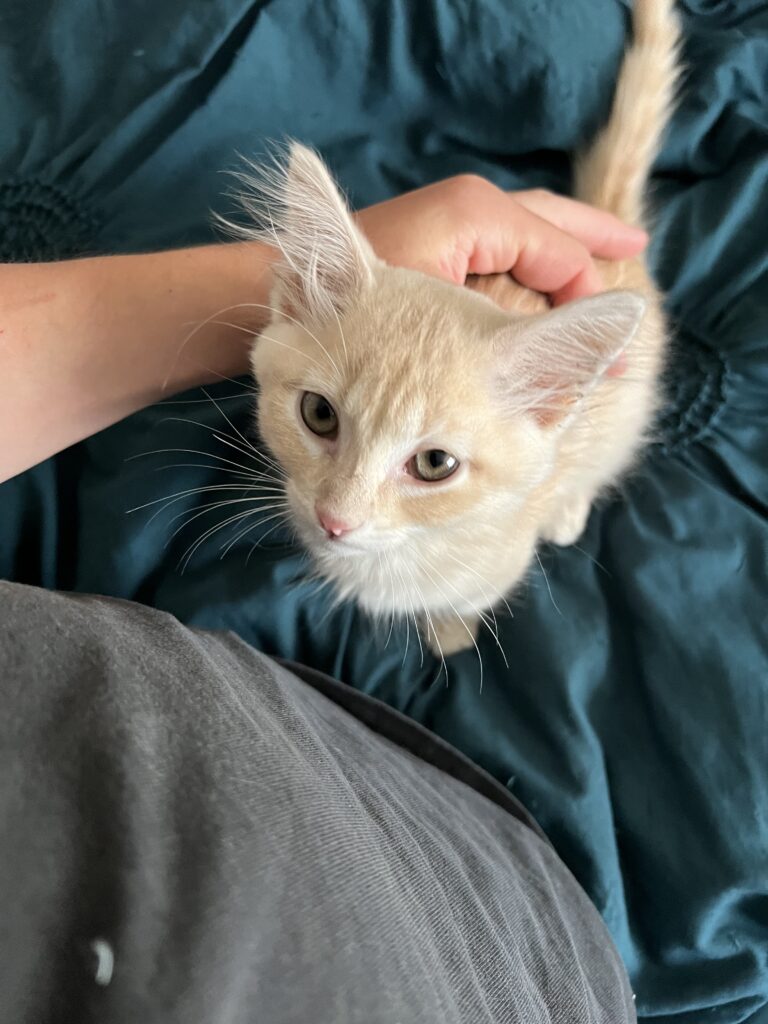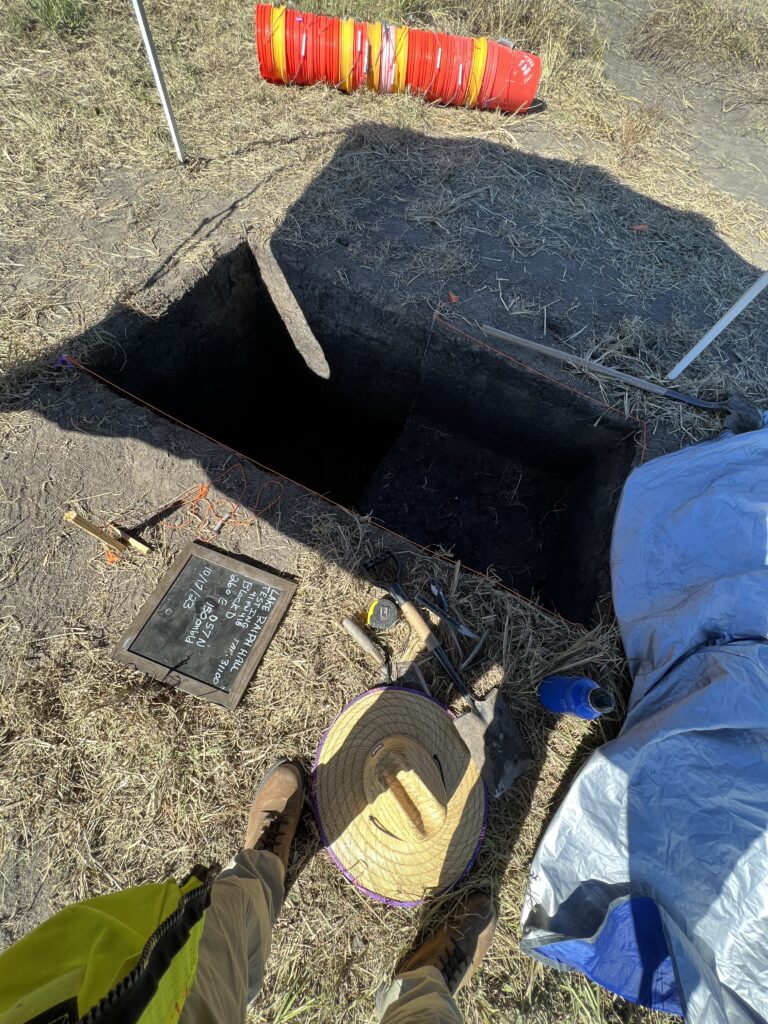Feline Archaeology and the Ancient Relationship with Cats
The Purr-fect Past
Throughout history, our relationship with cats has been one of mystery, admiration, and companionship. These graceful creatures have held a special place in our hearts, leaving marks in art, mythology, archaeology, and couches everywhere. This article aims to explore some of the most intriguing archaeological findings related to cats and understand the profound connection between us and our furry friends.
The Earliest Domesticated Cats
In 2004, an archaeological dig on the Mediterranean island of Cyprus uncovered the grave of a man buried with his feline friend. The significant aspect of this find is the age – dated to around 7500 BCE. Prior to this discovery, historians believed domestication of cats began in ancient Egypt, but this finding pushed back the timeline by nearly 4000 years. The positioning of the cat, laid beside its human, indicated a bond of companionship.
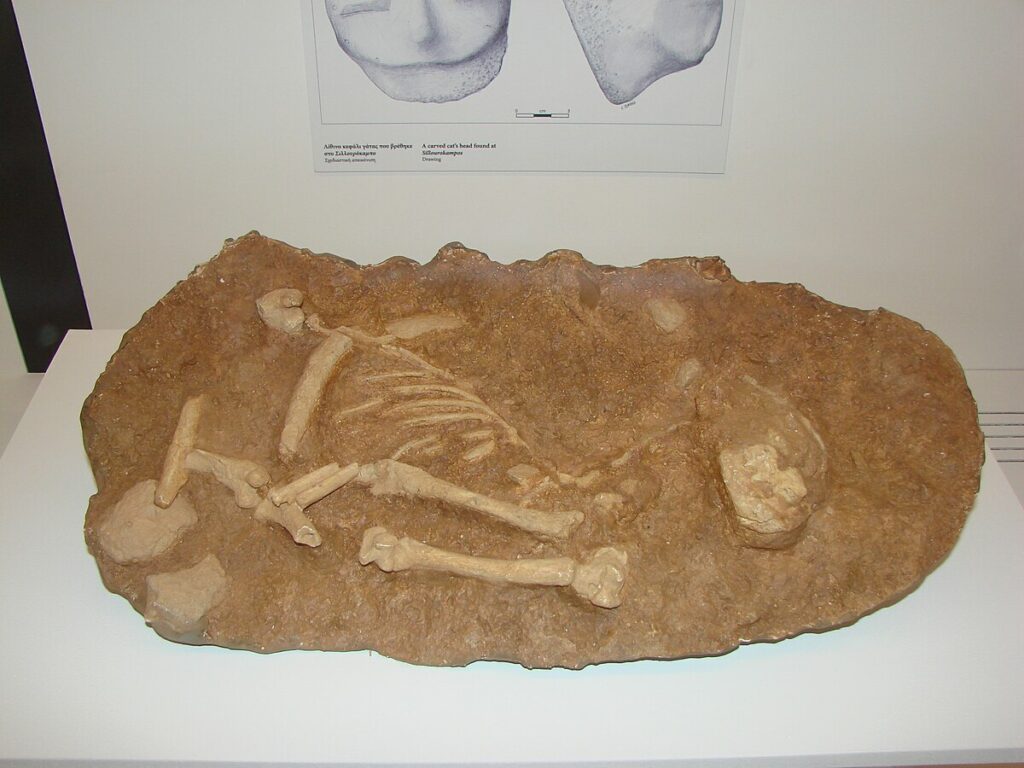
Symbols of Divinity and Domesticity
Ancient Egyptians held cats in high regard, both as household companions and as symbols of divine power. Cats were associated with Bastet, the goddess of home, fertility, and protection. Mummified cats have been found in various tombs, signifying their sacred status.
One of the largest cat cemeteries was discovered in Bubastis, an ancient city dedicated to Bastet. Thousands of mummified cats, along with intricate bronze statues, highlight the significance of felines in Egyptian life and the afterlife.
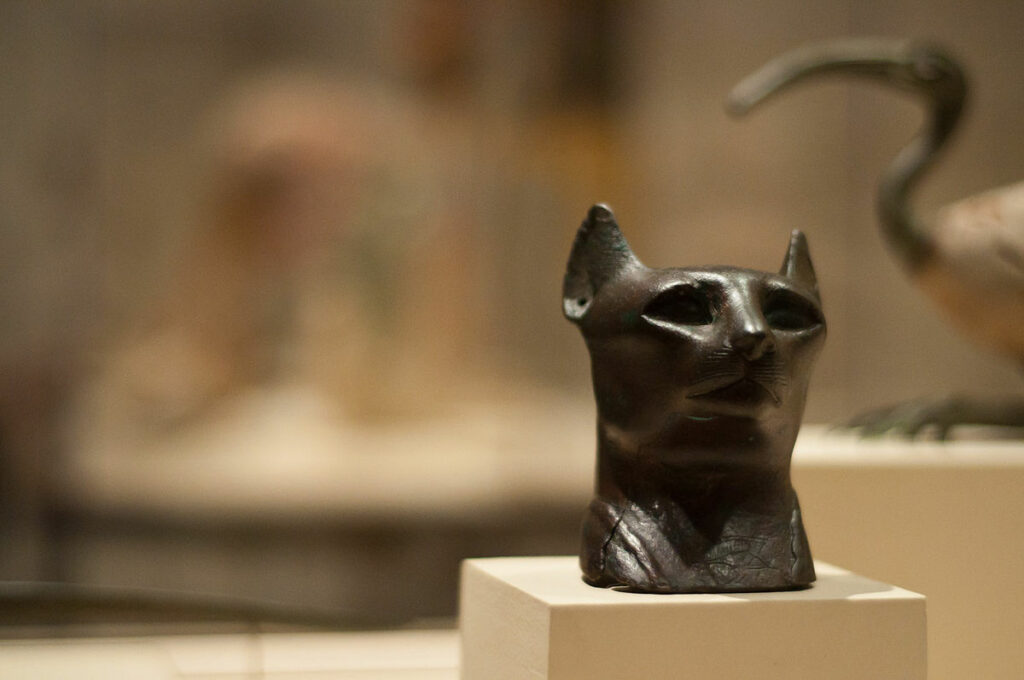
Get your own bronze Egyptian Fertility Bastet Cat Goddess sculpture here.
Cats in Chinese Agriculture
While much attention focuses on Egypt, evidence from China suggests an agricultural relationship with cats. In the ancient Chinese village of Quanhucun, a 5,300-year-old feline jawbone was found. The isotopic analysis of this specimen showed signs of a diet rich in millet – a staple food grain for ancient Chinese villagers. This suggests that cats might have been attracted to settlements to hunt rodents feeding on stored grain, leading to an unintentional domestication process.
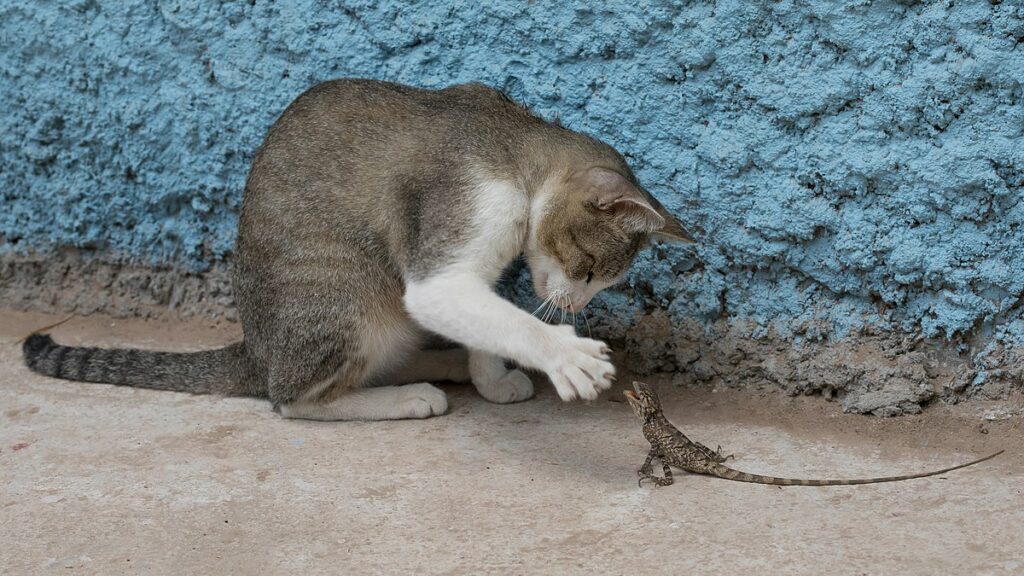
The Viking Sea-faring Cats
Recent genetic studies indicate that cats traveled alongside Vikings during their sea voyages. While dogs were primarily used for herding and hunting, cats played a crucial role in keeping ships free of rats. Not only were they functional, but it’s also believed that cats held spiritual significance to the Vikings, symbolizing Freyja, the goddess of love and fertility.
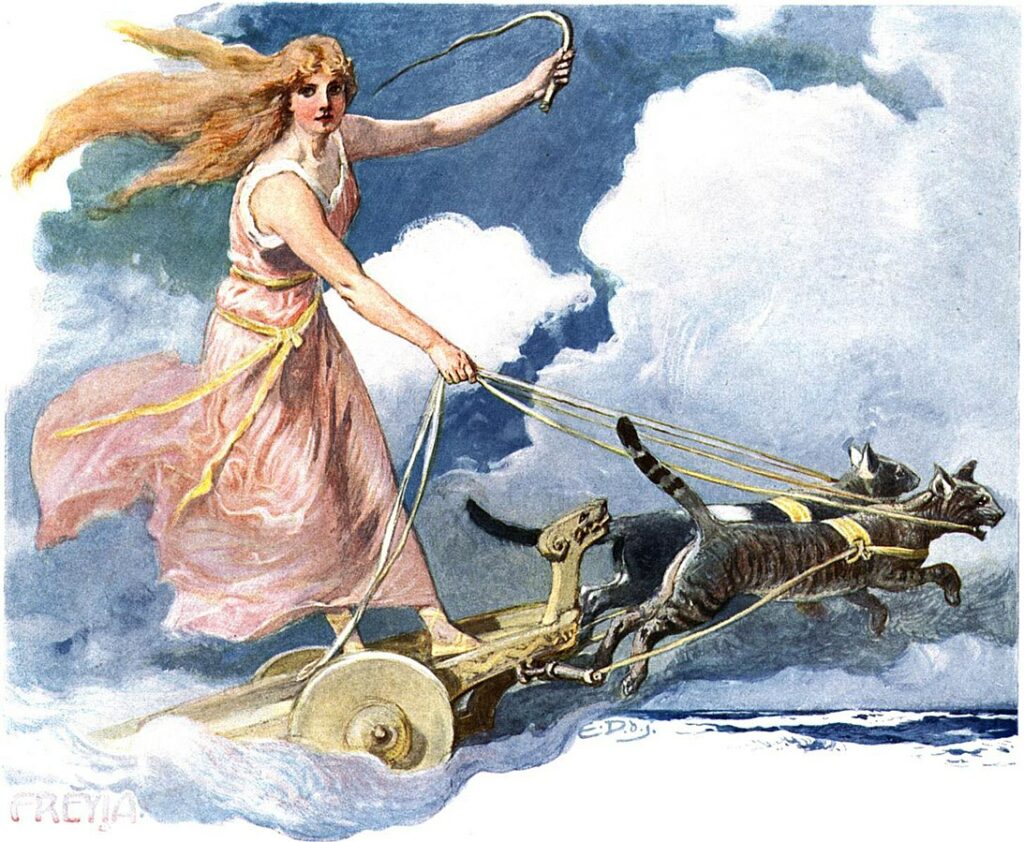
Cats in Medieval Manuscripts
Throughout the Middle Ages, cats became widespread across Europe. A charming testament to their presence in everyday life is found in the margins of illuminated manuscripts. Scribbles, drawings, and even complaints by medieval monks about their feline companions interrupting their work, offer an intimate glimpse into the daily lives of people and their cherished pets.
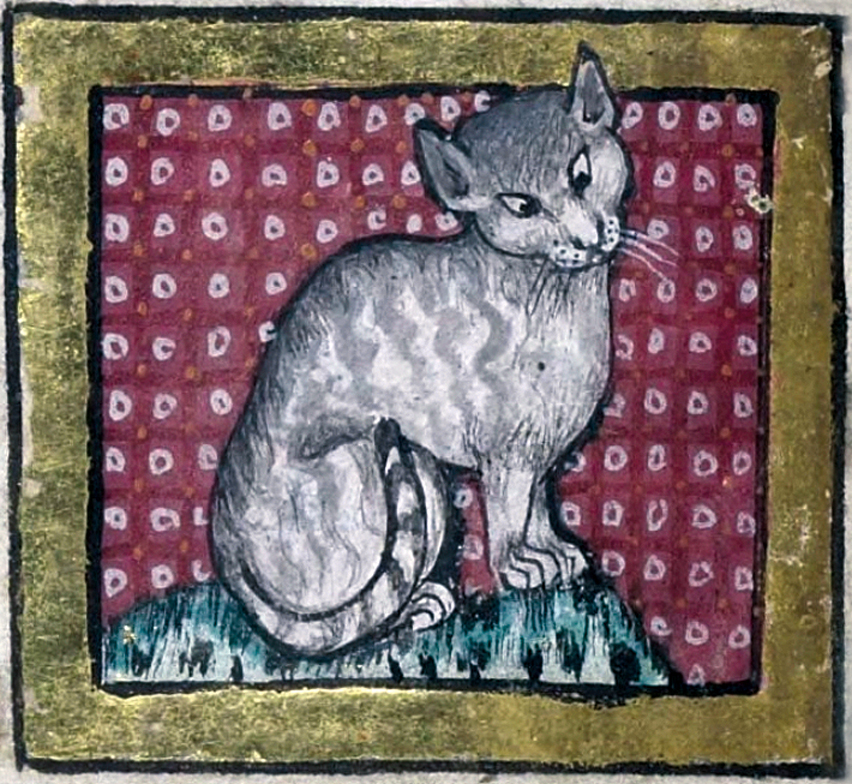
The Timeless Tale of Humans and Cats
Cats have been intertwined with human history for thousands of years. From early domestication in Cyprus to their revered status in Egypt, from Chinese agricultural settlements to Viking ships, and in the margins of medieval manuscripts, cats have purred their way into the annals of archaeology. These archaeological findings not only highlight the enduring relationship between humans and cats but also remind us of the diverse roles cats have played in various cultures across time.
Unraveling these tales from the past gives us a purr-spective on our age-old love affair with these mysterious and elegant creatures. The next time you find a cat curled up on your lap, remember the deep history and legacy it carries with it.
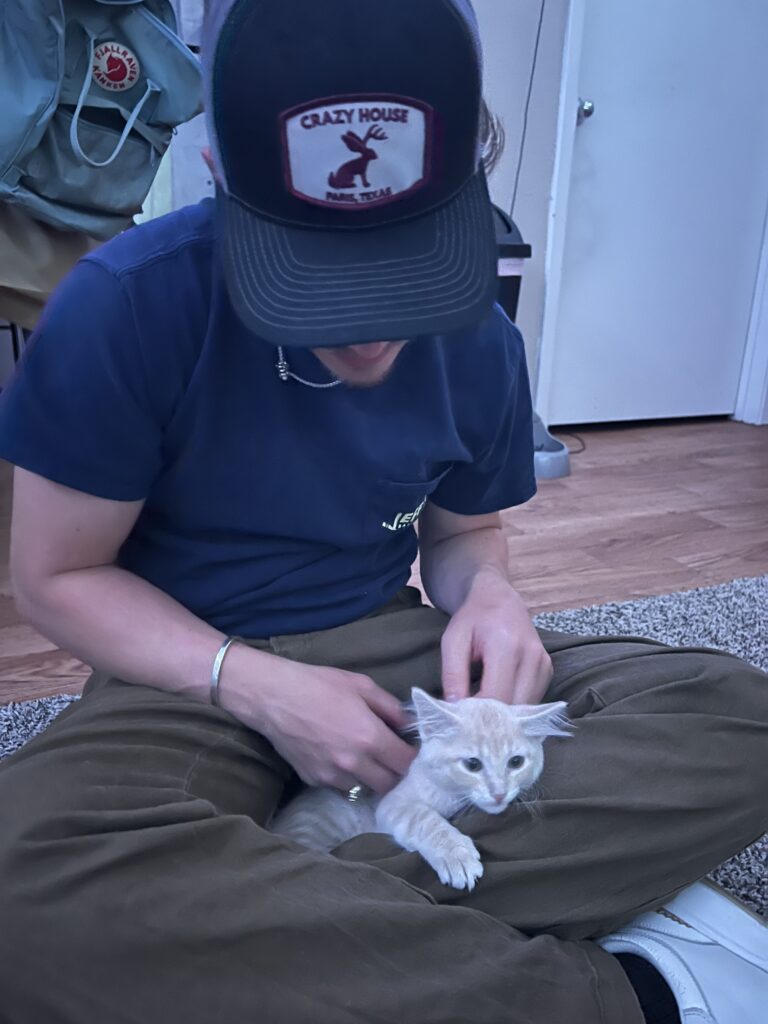
More info
“Did you know? In ancient Egypt, cats were so revered that when a family cat passed away, members of the household would shave their eyebrows in mourning. Archaeological finds have even uncovered mummified cats, showcasing the significant role they played in Egyptian culture and afterlife beliefs!”
“In ancient Rome, cats were seen as symbols of liberty. The free-roaming nature of cats, unlike tethered or penned livestock, mirrored the values of personal freedom cherished by the Romans. Several Roman mosaics depict cats in various hunting stances, emphasizing their independent and untamed nature.”
If this feline-focused read left you purring for more, and black cats on Halloween don’t spook your whiskers, dive into our eerie Halloween piece by tapping the button below!
